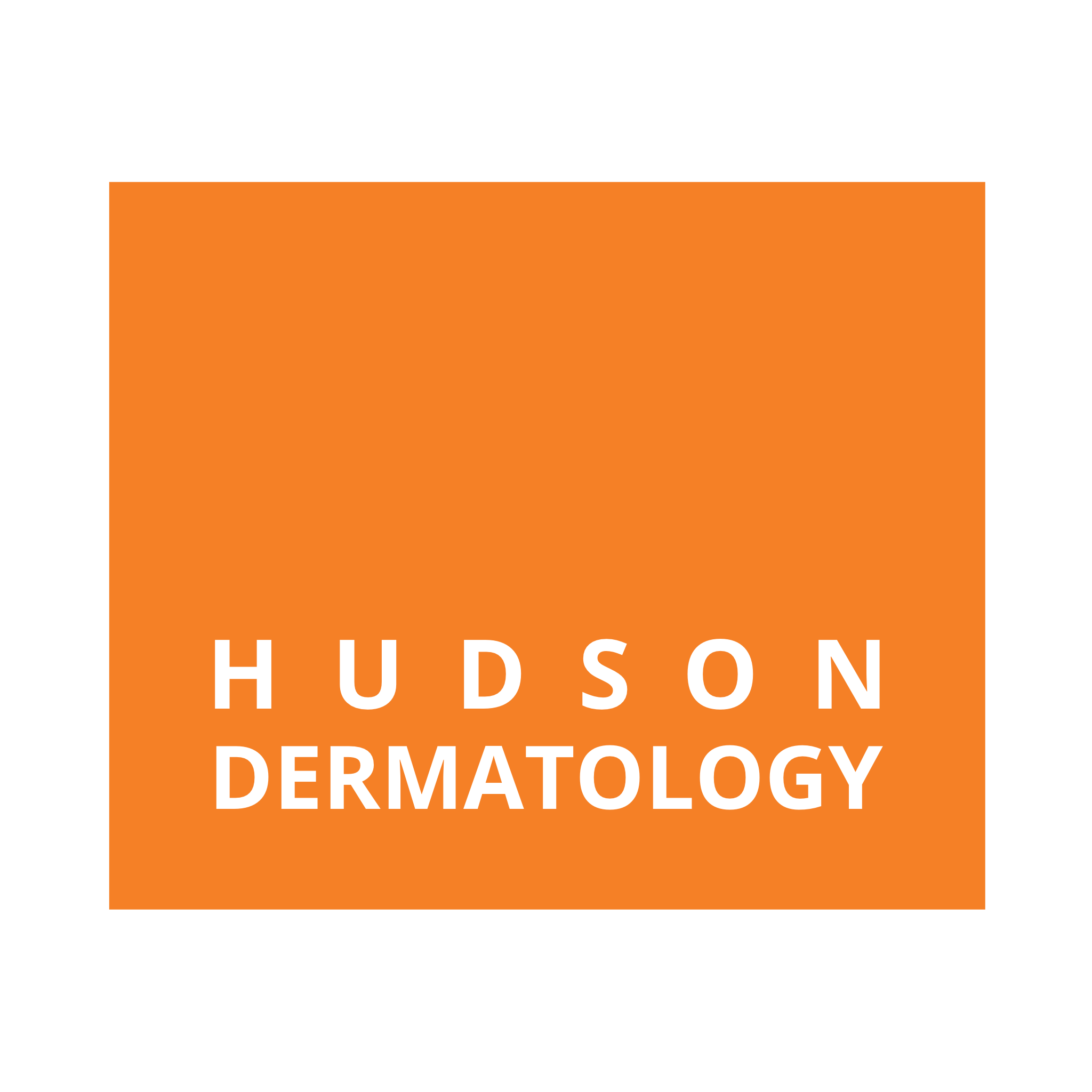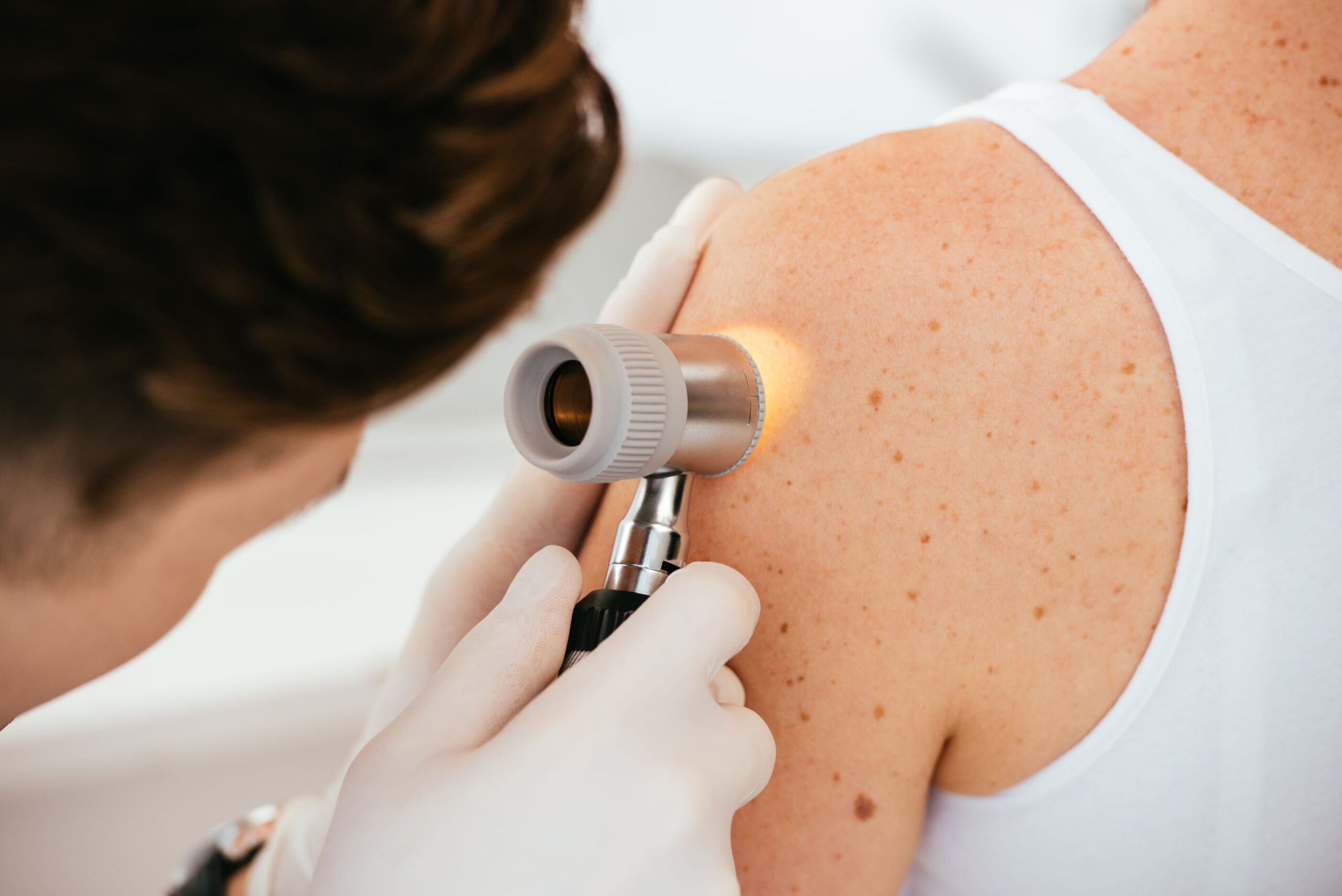
As the sun begins to shine brighter and the days grow longer, May welcomes not just springtime flowers and warmer weather, but also serves as Melanoma and Skin Cancer Awareness Month. This is an opportune time to raise awareness about the importance of skin health, the risks of skin cancer, and the proactive measures everyone can take to protect their skin from the sun’s harmful ultraviolet (UV) rays.
UNDERSTANDING MELANOMA AND SKIN CANCER
Skin cancer is the most common form of cancer in the United States. According to the Skin Cancer Foundation, more than 5 million cases are diagnosed each year, making it more prevalent than all other cancers combined. Among the various types of skin cancer, melanoma is the most dangerous if not caught and treated early.
Melanoma arises from melanocytes, the cells that produce pigments in our skin. While it accounts for only about 1% of skin cancer cases, it causes a large majority of skin cancer deaths. The American Cancer Society estimates that in 2024, approximately 100,350 new melanomas will be diagnosed, and about 7,650 people are expected to die of melanoma in the United States alone.
RISK FACTORS FOR MELANOMA AND SKIN CANCER
Several factors can increase your risk of developing melanoma and other skin cancers:
- Excessive UV Exposure: Whether from the sun or from artificial sources like tanning beds, UV radiation is a major cause of most skin cancers.
- Skin Type: Individuals with fair skin, freckles, or red or blonde hair have a higher risk.
- Personal History: Having a history of sunburns, especially early in life, increases your risk significantly.
- Family History: Genetics also play a role. A family history of skin cancer can raise your risk.
- Age: Older age is a risk factor, although melanoma is also one of the most common cancers in young adults.
WHAT CAN BE DONE TO PREVENT SKIN CANCER?
There are many steps you can take to help minimize your risk of developing skin cancer. First and foremost, avoid direct sunlight—especially during the middle of the day when the sun’s rays are at their strongest. When going outside, always wear sunblock with an SPF of at least 30, even on cloudy days. Wear protective clothing and sunglasses whenever possible. Some brands sell clothing specifically designed to offer protection from the sun’s damaging rays.
Avoid tanning beds, since the ultraviolet (UV) radiation they emit increases the risk of developing skin cancer. Additionally, certain medications including certain antibiotics and diuretics can make your skin more sensitive to light, so be sure to ask your doctor about the side effects of any new medical prescriptions. Lastly, perform regular examinations of your skin to familiarize yourself with any freckles, moles, birthmarks, or bumps. If you notice any changes, schedule an appointment with us to discuss your concerns.
EARLY DETECTION
Knowing what to look for can save lives. Look for new growths or changes in existing moles, freckles, bumps, or birthmarks. Here’s what the Skin Cancer Foundation advises you to remember with the ABCDEs of melanoma:

EXAMPLE MELANOMA
ASYMMETRY
Moles are typically symmetrical, which means the right side is basically a mirror image of the left. Cancer cells often grow in a way that causes asymmetry, so watch for lesions that are not generally round or are otherwise misshapen.

EXAMPLE HEALTHY MOLE
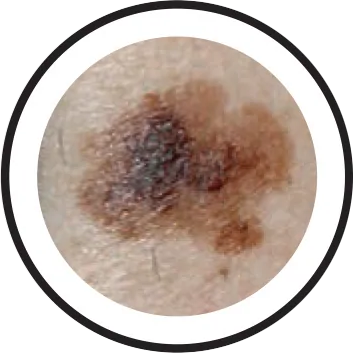
EXAMPLE MELANOMA
BORDER
A normal mole will have a distinct and well-defined border. Finding a lesion that has scalloped, notched, or “hazy” edges can indicate the presence of cancer cells and should prompt a closer examination by an experienced dermatologist.

EXAMPLE HEALTHY MOLE
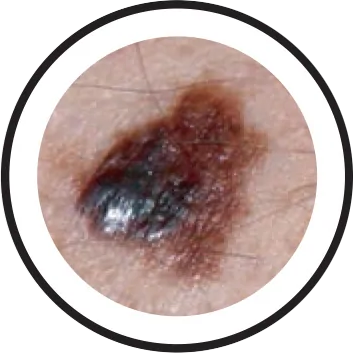
EXAMPLE MELANOMA
COLOR
While moles come in many colors, they are almost always uniform—meaning a brown mole is fully brown. Lesions that feature multiple colors are a concern, as are those that are especially dark, black, or an unexpected hue.

EXAMPLE HEALTHY MOLE
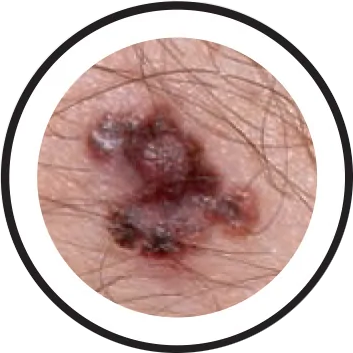
EXAMPLE MELANOMA
DIAMETER
The larger a mole is, the more suspicious it is—at least past a certain point. Single out anything bigger in diameter than a pencil eraser for scrutiny in case its size indicates that the lesion in cancerous.
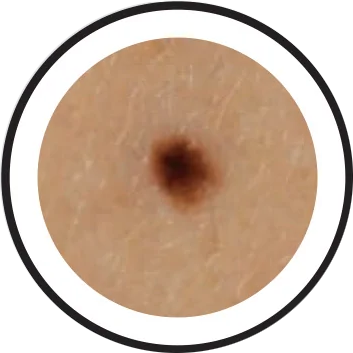
EXAMPLE HEALTHY MOLE

EXAMPLE MELANOMA
EVOLVING
Cancer cells divide rapidly, which means that malignant moles often evolve in a way that other moles don’t. Changes may include size, shape, color, or all of the above. Also, be aware of moles that have evolved to be “ugly ducklings,” meaning they stand out from the rest.
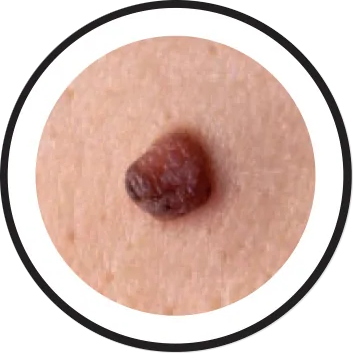
EXAMPLE HEALTHY MOLE
WHAT SKIN CANCER TREATMENTS DOES HUDSON DERMATOLOGY OFFER?
Skin cancer is a highly treatable condition, especially if detected and treated early. Because of this, it is essential that patients perform regular self-examinations and seek medical assistance as soon as they notice a change or cause for concern.
When it comes to skin cancer, Hudson Dermatology offers a variety of treatment options. The ideal treatment option for a patient will depend on a variety of factors, including the type of skin cancer, location, and depth, as well as patient preference.
Here are some of the most effective skin cancer treatment options available at Hudson Dermatology:
- Cryosurgery: Typically utilized for small areas of skin cancer detected early, this method involves freezing cancerous bumps and lesions with liquid nitrogen.
- Electrodessication and Curettage (ED&C): This treatment process typically begins with an injection of a local anesthetic, after which the physician scrapes away abnormal tissue with a surgical tool called a curette, then cauterizes the area to minimize bleeding.
- Excision: This is a fairly straightforward and frequently utilized skin cancer treatment option, during which the physician physically cuts out the cancerous tissue and a certain amount of healthy skin adjacent to cancer.
- Mohs Surgery: This is a popular and highly effective treatment choice for cancers that occur in highly visible, delicate, or difficult to heal areas such as on the face, hands, or below the knee. Hudson Dermatology’s Ross Zeltser, MD, FAAD, FACMS, is double board-certified in dermatology and Mohs micrographic dermatologic surgery. He is one of the first physicians in the world to earn board certification in Mohs micrographic dermatologic surgery. Dr. Zeltser has been performing Mohs in the Hudson Valley since 2007. He is one of the top Mohs surgeons by case volume experience in New York State.
RESOURCES
If you’re looking for more information or support, visit reputable sources such as the American Academy of Dermatology (AAD) or the Skin Cancer Foundation. Both offer educational resources, prevention tips, and guides on performing skin checks.
